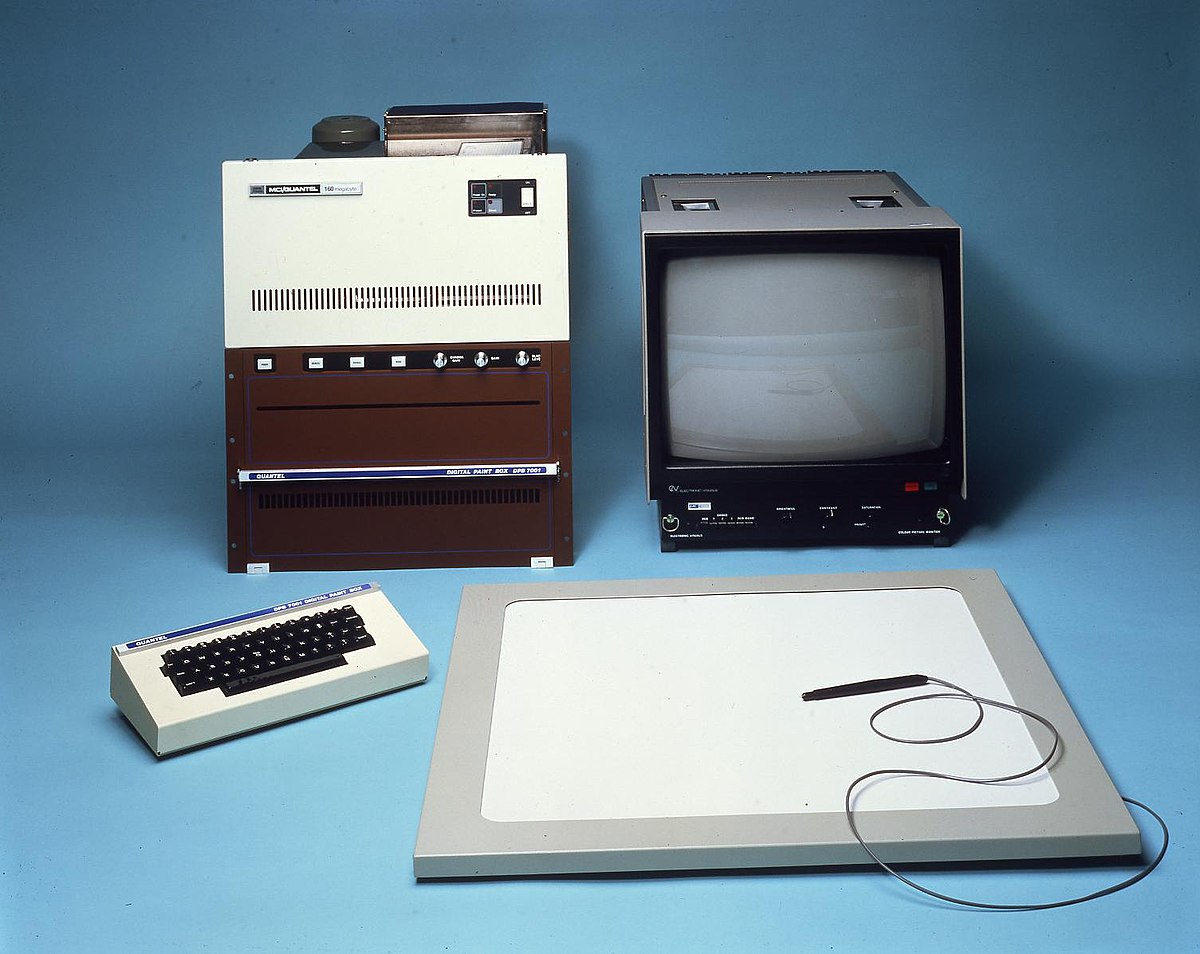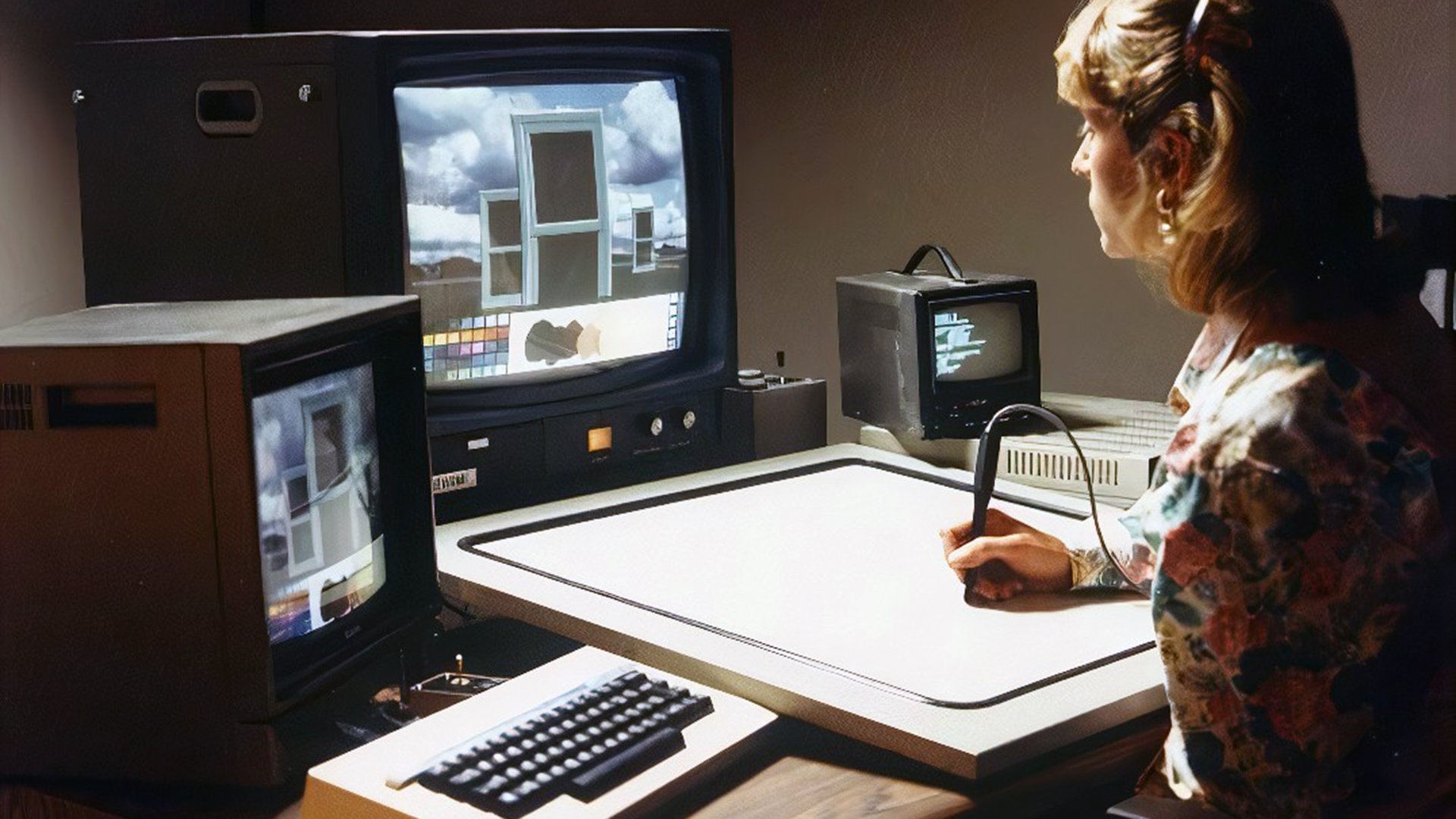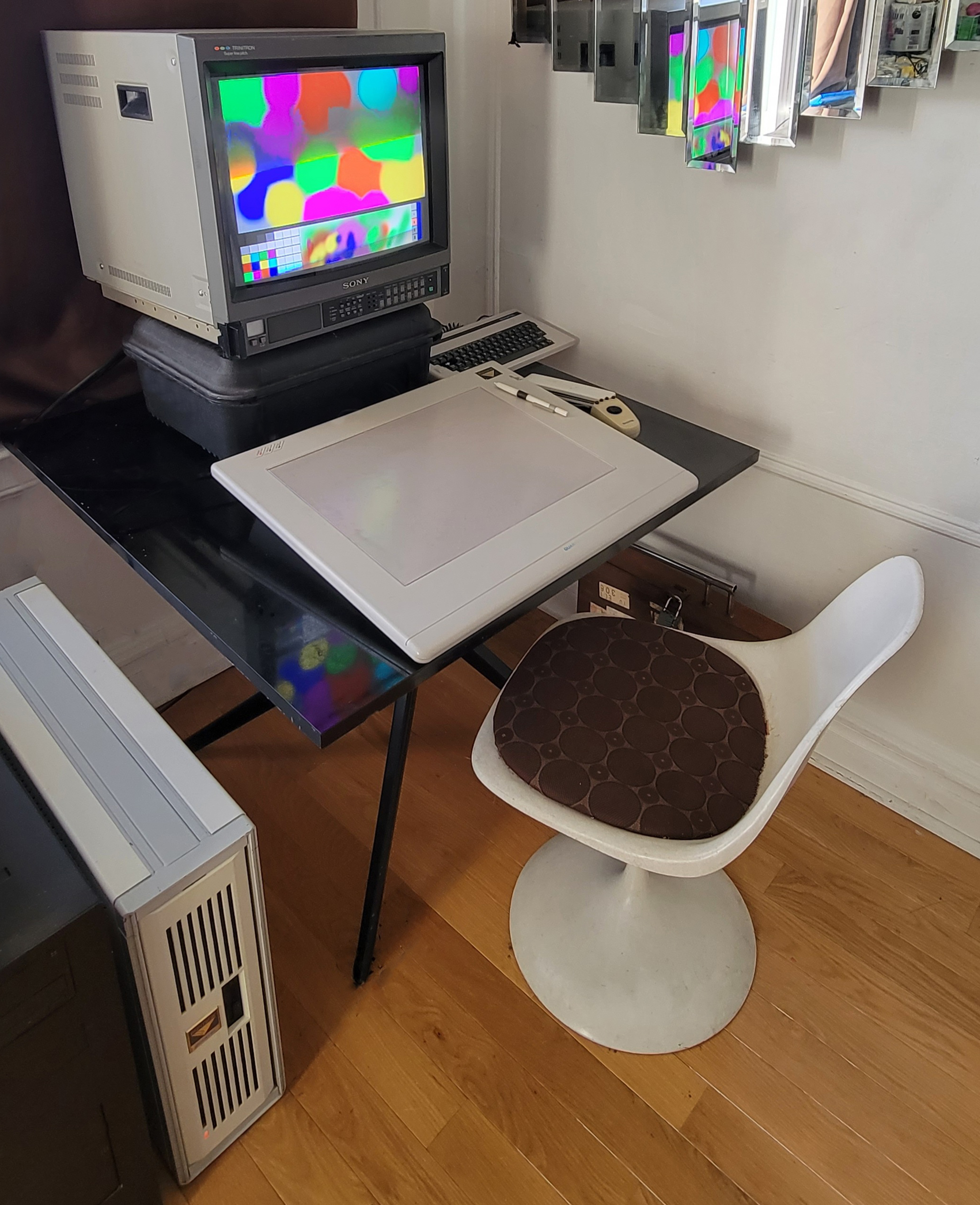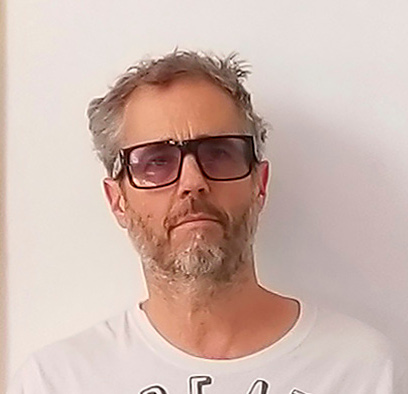How Quantel’s Paintbox Revolutionized TV Graphics 40 Years Ago
The graphics marvel influenced the look of TV in the '80's and beyond

At the 1981 NAB Show, U.K.-based company Quantel launched the $250,000 DPB-7001 Digital Paint Box, quickly referred to as simply “Paintbox,” with The Weather Channel its first customer. The machine revolutionized television graphics, helped kickstart the 1980s TV post-production industry, influenced fashion and heralded the start of the “Photoshop Era.”
Quantel (QUANtized TELevision) invented several technical broadcast devices in the 1970’s, in particular, digital frame stores. It was Quantel that first allowed broadcasters to generate a live picture-in-picture inset in 1976. Quantel used that digital storage expertise to create a machine that was such a creative and technological leap, it would take a decade before it faced any real competition.
‘A Giant Accelerated Graphics Card’
The Quantel Paintbox was a 24-bit, true color, real time, broadcast quality graphics computer which allowed operators to navigate by using the first pressure-sensitive stylus and drawing tablet to click simple menu boxes. It's “compact, economical” Fujitsu M2294 “Eagle” hard drive weighed more than 100 lbs. and only stored 335 MB.
The only way Quantel’s engineers could make a painting system fast enough to keep up with an artist's input and be responsive was to move all the creative functions into a hardware design utilizing hundreds of ICs. The Paintbox is effectively a giant accelerated graphics card, with the hard drive used for storing the artist’s work.

Although the Paintbox was a creative tool, designed to reduce the time and expense spent creating and digitizing conventional graphics, the first users were not artists or designers, but rather technicians. Broadcast unions were not at all happy with this new-fangled mechanization and would initially only allow technicians to use the Paintbox, which is why the people who used it were known as “operators” not “artists.”
In a 1984 New York Times article, Roger Goodman, director of production development for ABC News and Sports, said ''It used to be that we had a staff of artists who drew and drew. But with the Paintbox an artist can come up with a graphic in 15 minutes that used to take two days.”
The article noted that designers were finally starting to get access but the reason why many rightly look down on the early 1980’s digital TV graphics is not the Paintbox itself but those who were mesmerized by the bright new colors and shapes which could be summoned at the tap of a pen. As design guru Steve Heller pointed out in a 40th anniversary review, “At design conferences I recall attending in the '80s, various critical debates raged over the ultimate efficacy of these motion graphics. Personally, I found them annoying. But I suspect they were an evolutionary speed bump in the highway of progress.”
The professional video industry's #1 source for news, trends and product and tech information. Sign up below.
The Look of the ‘80’s
And a speed bump they were. By the mid 1980’s, most of the graphics and visual effects that people watched on TV worldwide were created on Paintbox. From weather maps to news graphics, adverts to pop videos, there is a reason why the 1980’s became known for its bright saturated colors and crazy graphics.

Design historians list graffiti, hip hop and the Memphis Group as sources of the 1980’s popular aesthetic but as Glenn Adamson, a senior scholar at the Yale Center of British Art noted about the Memphis Group, “I always think it’s important that it happened virtually simultaneously with MTV, which also launched in 1981.” (Naturally MTV was an early Paintbox adopter.)
Though the unions had loosened their restrictions and independent TV post production companies who invested in a Paintbox were cashing in on the demand from advertising agencies, Quantel may have sold hundreds of Paintboxes but operators were in short supply.
As Beau Tardy, Paintbox operator for MTV and later Nickelodeon, points out, it took several years to be allowed to even touch this quarter of a million dollar machine that would be working 24/7. Independent operators were scarce because unless they worked in a large TV company or post production house, there was no way to learn how to use one, unless they got hold of a copy of the training tapes, or assisted another operator.
Independent operators were paid $500 an hour and even Martin Holbrook, the genius illustrator who worked with Quantel to help create the intuitive interface design and demonstrate the Paintbox, left in 1986 to set up his own post production company in SoHo. The same year, Quantel tried alleviating the shortage of artists given access to the Paintbox by donating two to be shared among six art colleges in the U.K. and invited six international artists for a BBC promotional documentary “Painting With Light.”
Artist David Hockney instantly fell in love with the Paintbox, sparking a lifetime passion for digital paintings he first referred to as “colored glass drawings.” Quantel engineers were also developing a more compact, better and cheaper (though still $100,000) version of the original, plus a higher resolution “Graphic Paintbox” for the first photographers who were starting to digitally manipulate images.
A Competitor Emerges
Quantel by now had offices around the world and even their own private jet. They introduced 3D animation, integrated framestores and expanded their range. Because both the hardware and software were proprietary, it was impossible for a competitor to copy what the Paintbox could do until powerful and relatively cheap desktop computers became available. Even without those advantages, Quantel held international patents on several features of the Paintbox and used them to nip any competitors in the bud.
Their legal victory against Spaceward may have made Quantel feel their lead was unassailable but in 1990, Adobe launched Photoshop 1.0 and there is a reason we now refer to images being “photoshopped” not “paintboxed.” Quantel again sued for patent infringement but didn’t count on the indignation of Alvy Ray Smith, who co-created Paint with Dick Shoup and went on to co-found Pixar.
“When we had first seen the Paintbox at a National Association of Broadcasters convention, we had known immediately what we were seeing: Paint done in hardware,” Smith said. “There was no other way to get the speed they were showing at that time.”
Smith had spent a lifetime collaborating and freely sharing his ideas, so he hated the idea that a company was trying to monopolize and control the sector. He was a star witness for his friends at Adobe and by chance, a photograph was found which proved that one of the Paintbox features that Quantel claimed to have invented was already in use on a computer at Smith’s NYIT campus. Adobe won and Quantel faced large financial losses at a time when a multitude of cheap competitors were springing up. The case didn’t destroy Quantel but it certainly hastened its demise.
Only Two Survive
Four decades on, only long-time broadcast veterans now remember the legendary Quantel Paintbox. The general public considered the 1980’s to be the “8 bit decade” because that was the capability of the home computers and video games of the time. The Paintbox then is equivalent to Google’s search engine now—it affects everyone’s lives but only a select few ever get to actually see it.

Of the hundreds sold, only two examples of the original DPB-7001 Paintbox series survive, and one is in a museum. The other is being restored to mark it's 40th anniversary by Mark Nias with the help of many former Quantel employees, including those that worked on designing it in the late 1970’s.
Of all other Quantel Paintbox versions, there are only 22 known examples known to exist, and only a dozen of those are in working order. Despite being a huge market for Quantel, there are only a handful left in the U.S., though the hope is that the publicity around the anniversary results in a few more being found.
New York-based Paintbox artist, Adrian Wilson, owns the only working Paintbox on the U.S. East Coast, which was bought from eBay earlier this year and restored to full working order by Nias. He has since teamed up with Mark Nias in England and Matthias Paeper in Germany to offer post-production companies and clients the opportunity to create authentic 1980/90’s looking video and stills on their machines. Wilson has an open invitation to any former operator to spend some time for free on his second generation Paintbox.
After 40 years, the Quantel Paintbox has a visual digital fingerprint and a particular vintage look that is very hard to replicate. As well as period visuals, anyone looking at the price of old PVMs lately soon realizes that 1980’s retro-tech is very much back in demand with visual artists and gamers. Thanks to Nias and the Quantel community, this truly disruptive and creative machine is not just being given overdue recognition but also potentially a new role in the broadcast and wider creative world.
Adrian Wilson,born 1964 in England, was likely the first professional photographer in the world to digitally manipulate photographs, from 1986 to 1990, using a Quantel Paintbox. Wilson then became a renowned architectural photographer, moving to NYC in 2014 and shooting for the likes of Apple, Architectural Digest and LVMH. Publicly, he is best known as the street artist "Plannedalism," famous for altering street and subway signs in NY. Following the NFT community's search for early digital art, Wilson remembered his own collection that had been in storage for the last 30 years and which will be donated to a museum. In July, Wilson had the good fortune of acquiring one of only 4 Paintboxes in the USA and had it restored to full working order to both create new art on, and to offer it to others to use.

